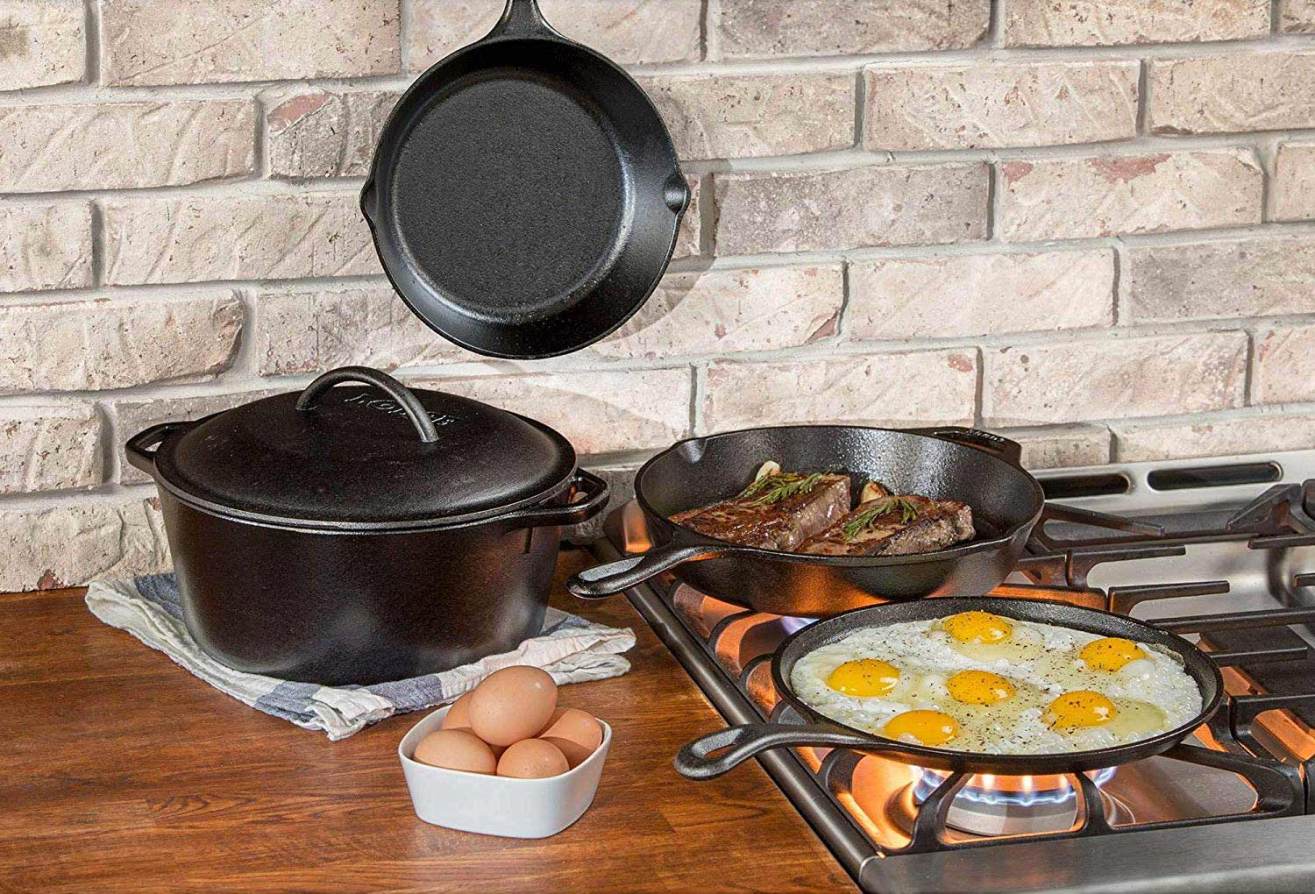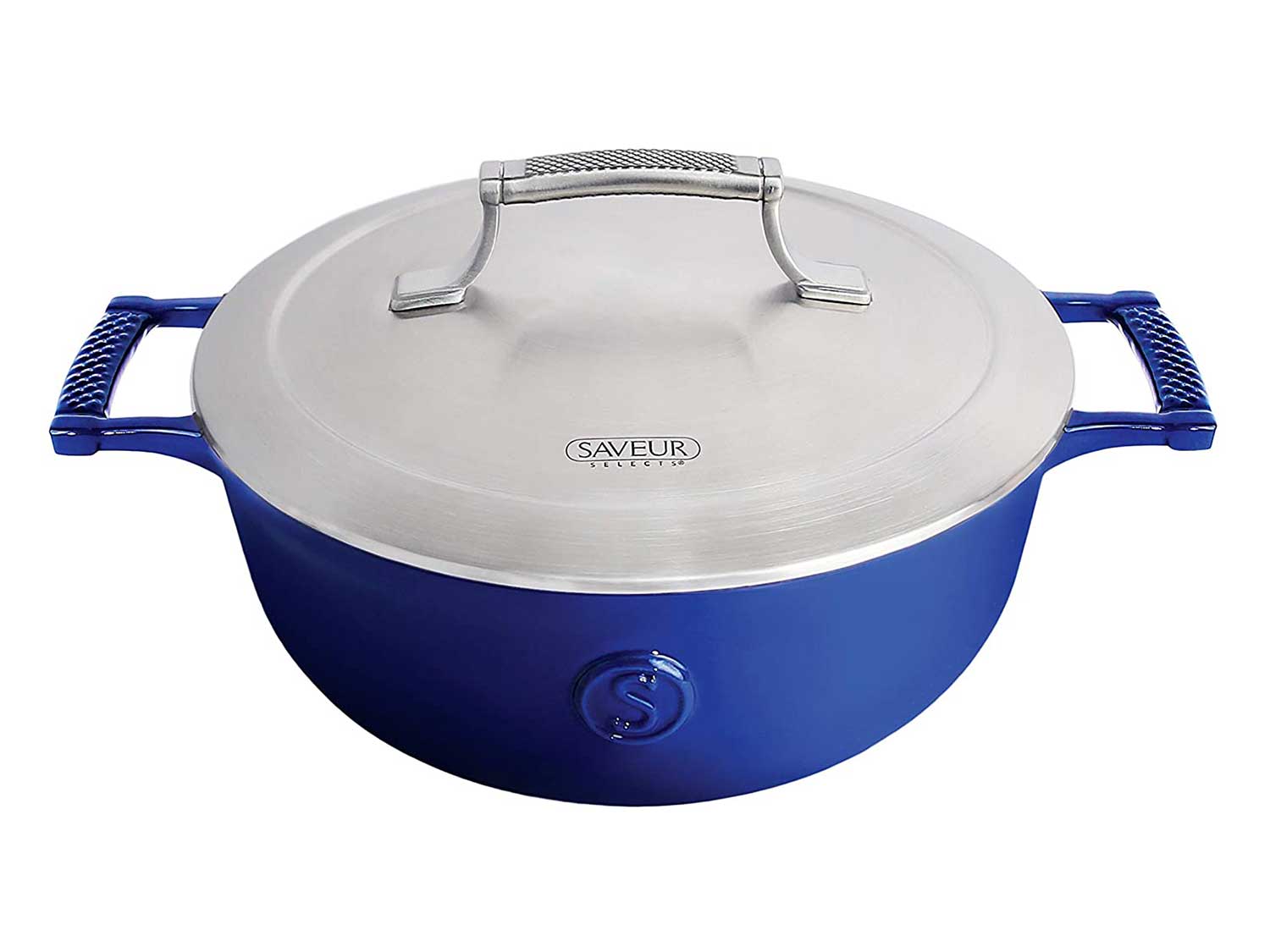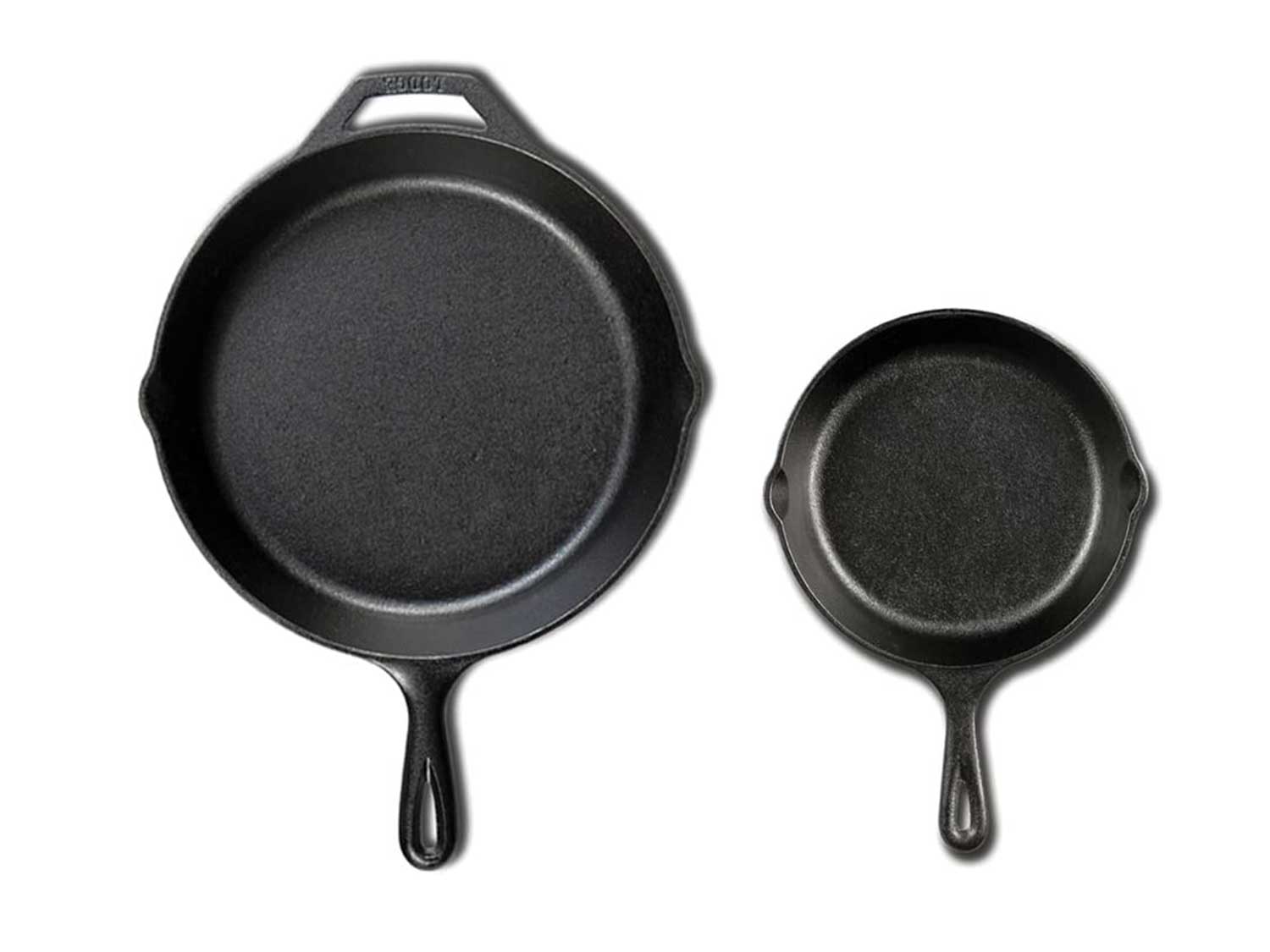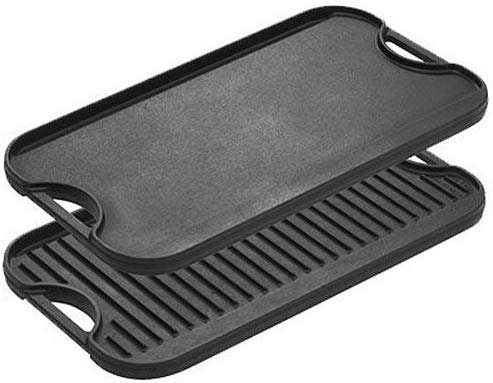We may earn revenue from the products available on this page and participate in affiliate programs. Learn More ›
Cast iron cookware has been around for centuries, but for good reason. The versatile kitchenware can do everything from baking to frying, and its revered for its ability to evenly retain heat and avoid burnt spots that can come from improper flame control, so it’s as at home on an open fire or in the finest kitchen. Whether you need to fry bacon for breakfast, simmer stew for dinner, or bake biscuits for dessert, you can do it with cast iron. You can even swap skillets and Dutch ovens from the stovetop to the oven, allowing you to brown the outside of your favorite cut to perfection but finish the center to your preferred shade of pink. Here’s a few tips to get started cooking with this age-old material.
There’s something about the raw, rugged finish of natural cast iron. But if your cooking plans involve a lot of foods that contain acids (think dishes cooked with a lot of wine or tomatoes), consider enameled cookware. As the name implies, these pots and pans have an enameled finish over the interior and exterior. This means you won’t have to worry about your beef bourguignon taking the finish off your Dutch oven. Cleanup is also easier, but you can’t put these over on open fire or on your grill.
Unlike non-stick pots and pans, cast iron needs to be seasoned before use. To keep food from getting stuck, a thin layer of fat or oil must be added to fill in the metal’s pores. To do that, spread a thin layer of shortening or vegetable oil over your pan, crank your oven or barbecue up to 375 degrees, and let the pot sit inside for an hour. Or, if you don’t want to go through the hassle, you can buy a pre-seasoned pan and skip this process.
Some folks avoid cast iron because they believe it’s hard to clean, but that’s not the case. Many times, the pan can be wiped clean with a damp rag and returned to the heat to dry after applying a little oil to preserve the seasoning. If there are some stuck-on bits, scrub it with a sponge but try to avoid soap, which can remove the seasoning. If it’s really stubborn, scrub with a few tablespoons of coarse salt. Whichever method you use, dry the pan and apply a little oil to prevent rusting.



